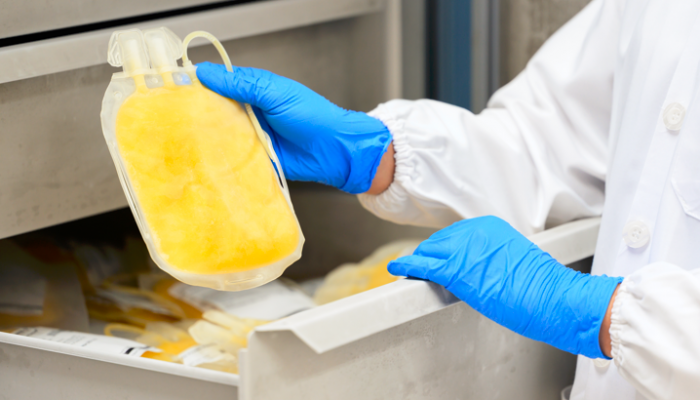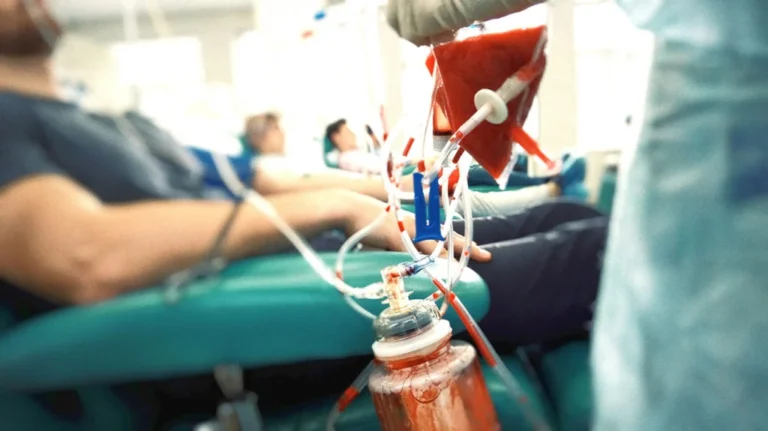Unlocking the Mystery: What is Plasma Donation and Why It Matters?
Understanding Plasma: The Gold Liquid of Healthcare

Plasma, the pale yellow component of blood, is often termed the “gold liquid of healthcare” due to its crucial role in medical treatments and therapies. Comprising about 55% of total blood volume, plasma is composed of approximately 90% water, with the remaining 10% containing proteins, electrolytes, hormones, enzymes, and waste products. This liquid gold is essential for maintaining blood pressure and regulating body temperature, but its importance goes far beyond basic bodily functions. Plasma serves as the carrier for many critical substances, including antibodies that protect us from infections, clotting factors that enable wound healing, and nutrients that nourish cells. In fact, plasma can be processed into various life-saving products, such as immunoglobulins, clotting factors, and albumin, which are vital for treating conditions ranging from immune deficiencies to liver diseases.
The Life-Saving Impact of Plasma Donations
The need for plasma donations has surged, especially in recent years, as advancements in medicine continue to expand the definition of treatable conditions. According to the American Red Cross, a single donation can help save the lives of up to three patients, as plasma is utilized in a variety of medical treatments, including burn care, trauma treatment, and surgeries. Furthermore, plasma is irreplaceable for individuals with chronic conditions, such as hemophilia, where clotting factor transfusions can be life-sustaining. The growing demand for clotting factors, especially during health crises or natural disasters, underscores the importance of a steady supply of plasma. As awareness about the significance of plasma donation grows, it is vital for individuals to understand how their contributions play a central role in advancing healthcare and ensuring better patient outcomes.
Who Can Benefit from Your Generosity?
Plasma donations are not just numbers; they represent real people who are grappling with life-altering health challenges. Patients diagnosed with severe burns, individuals requiring surgery, and those with clotting disorders like hemophilia rely extensively on plasma-derived therapies. Each donation can serve multiple purposes: a patient with liver failure might benefit from albumin therapy, while another individual grappling with an autoimmune disorder may require immunoglobulin therapy. Moreover, people with chronic illnesses, such as multiple sclerosis or certain types of leukemia, often depend on these lifesaving therapies to maintain their health. Understanding the myriad of recipients who benefit from plasma donation underscores the vital importance of each individual’s decision to donate, emphasizing that every drop counts in the collective fight against disease and injury.
Finding Your Nearest Plasma Donation Center: Your Treasure Map

Top Resources for Locating Donation Centers
Locating the nearest plasma donation center is the first step for anyone eager to support this vital cause. Fortunately, several resources make it easy to find a center close to you. Websites like the American Association of Blood Banks (AABB) and the Plasma Protein Therapeutics Association (PPTA) offer directories of certified plasma donation centers across the country. Additionally, local hospitals and medical facilities often organize plasma drives, providing convenient opportunities for donors. Community bulletin boards, social media groups, and regional health departments also serve as helpful tools for identifying donation events nearby. These resources not only assist in finding a center but also provide essential details about donation requirements, accepted plasma types, and any necessary paperwork or preparation before donating.
Navigating the Modern World of Plasma Centers
Modern plasma centers come equipped with state-of-the-art technology andare staffed by medical professionals dedicated to ensuring donor safety and comfort. When searching for the nearest plasma donation facility, consider their reputation, hours of operation, and available resources. Many centers offer the option to schedule appointments online, reducing wait times and streamlining the donation process. Furthermore, donor feedback is often available online, providing insights into the experience one can expect at different centers. Personal referrals from friends and family who have already donated can also help establish trust in a particular facility. As you explore options, remember that the best plasma donation centers prioritize donor experience while maintaining the highest standards of medical safety and hygiene.
Mobile Apps: Your Personal Plasma Donation Companion
In today’s technology-driven age, mobile applications have emerged as a game-changer in the way plasma donations are organized. Several apps are now available to help connect potential donors with nearby plasma donation centers. For example, organizations such as Blood Donor and Donate Blood serve as platforms where users can find donation locations, track their donation history, and receive reminders for upcoming donation opportunities. Additionally, many local donation centers offer their own apps, enabling donors to schedule appointments and track their donation impact in real time. These user-friendly interfaces not only streamline the donation process but also foster community engagement, allowing donors to connect with others who share their commitment to making a difference.
Preparing for Your First Plasma Donation: Tips to Tame the Nerves

What to Expect During Your Visit
As you prepare for your first plasma donation, understanding the process can significantly ease any nerves you may have. Upon arrival at the donation center, you will be greeted by friendly staff who will guide you through the necessary steps, which typically begin with a registration process. Here, you will provide personal information and complete a health questionnaire to ensure your eligibility as a donor. Following registration, a medical professional will conduct a brief physical examination, which includes checking your blood pressure, pulse, temperature, and hemoglobin levels. This medical screening is essential, as it helps ensure both your safety and the safety of the recipients. Once cleared, you will be taken to a donation room, where you will be comfortably seated. The actual donation process usually lasts about 60-90 minutes, during which you will relax while the plasma is separated from your blood and collected in a sterile bag. Understanding what to expect can transform a potentially daunting experience into a smooth and reassuring process.
Hydration and Nutrition: Fueling Your Donation Journey
Preparing for a plasma donation goes beyond simply walking through the doors of the donation center; it begins with your overall health and well-being. Staying well-hydrated is one of the most crucial aspects of preparation. Drinking plenty of fluids in the days leading up to your appointment helps maintain blood volume and improves the ease of the donation process. Aim for at least 6-8 glasses of water daily, especially in the hours before your donation. Furthermore, a balanced diet that includes iron-rich foods such as leafy greens, lean meats, beans, and nuts will support optimal hemoglobin levels. It’s advisable to avoid fatty foods and alcohol before your visit, as they can complicate the donation process and affect plasma quality. By taking these measures, you can ensure your body is ready for the donation, enhancing both your comfort and the quality of the plasma collected.
Aftercare: The Secrets to a Smooth Recovery
Post-donation care is just as important as preparation, ensuring a smooth recovery and encouraging future donations. After your visit, the center’s staff will typically offer refreshments—a vital step in replenishing your energy and fluid loss. It is important to take a moment to relax in the recovery area before leaving, allowing your body to adjust. Over the next few hours, it is advisable to avoid strenuous activities and heavy lifting, as your body needs time to recover. Maintaining hydration continues to be key; drink plenty of fluids for the remainder of the day. Additionally, monitor yourself for any unusual symptoms, such as dizziness or prolonged soreness, which should be reported to a healthcare professional if they arise. Taking these aftercare steps can not only foster a better recovery but also encourage lifelong habits that make plasma donation a regular part of your life.
The Ripple Effect: How Your Plasma Donation Changes Lives

Heartfelt Stories from Plasma Recipients
The true measure of the importance of plasma donations can often be found in the stories of those whose lives have been directly impacted by the generosity of donors. Recipients often share poignant narratives of challenges faced in their health journeys. For instance, a young boy with hemophilia may recount the fear and pain associated with frequent bleeds before receiving lifesaving clotting factor treatments derived from plasma. Older adults facing chronic liver disease often express gratitude for the albumin therapies that significantly improve their quality of life. These stories are not only a testament to the tangible benefits of plasma contributions but also highlight the emotional and psychological impact on recipients and their families. By donating plasma, individuals contribute to a powerful network of life-saving interventions that can bridge the gap between suffering and healing, fostering a profound sense of community and altruism.
The Science Behind Plasma Utilization
The scientific advancements surrounding plasma utilization are as compelling as the stories that accompany them. Plasma-derived therapies are integral to modern medicine, revolutionizing the treatment of various health conditions. For example, immunoglobulins are essential for patients with immune deficiencies, allowing them to lead healthier lives by boosting their immune responses. Clotting factors extracted from plasma have transformed hemophilia from a life-threatening condition to a manageable one, enabling patients to participate in everyday activities without the constant fear of uncontrollable bleeding. Ongoing research continues to look toward innovative ways to utilize plasma, including potential treatments for COVID-19 and other emergent diseases. As the science behind plasma utilization evolves, so too does the need for continuous donor support to ensure that these critical therapies remain available for those in need.
Inspiring Community Initiatives and Drives
The impact of plasma donations extends beyond the individual to create community-wide initiatives and drives aimed at raising awareness and supporting donors. Many organizations and local health departments implement outreach programs that host plasma donation events, emphasizing the lifesaving importance of contributions. These drives often incorporate educational components, providing potential donors with information about the donation process, eligibility, and the specific needs of potential plasma recipients. Community engagement fosters a sense of belonging and encourages collective participation in the donation effort. Success stories from these initiatives serve to motivate others within the community, creating a ripple effect whereby one person’s decision to donate can inspire others to follow suit. Engaging in community initiatives amplifies not just the number of donations but also the overall understanding of plasma’s vital role in healthcare.

